All issues

Volume 37, Issue 3
Displaying 1-10 of 10 articles from this issue
- |<
- <
- 1
- >
- >|
-
Kaoru SUZUKI, Takeshi GOTO, Toshio TAKIGUCHI, Takumi TOKUMOTO2001Volume 37Issue 3 Pages 105-111
Published: June 15, 2001
Released on J-STAGE: March 12, 2010
JOURNAL FREE ACCESSThe effects of chewing gum or tasting candy on the reduction of motion sickness were examined by subjecting 97 subjects (in total) to 40 minutes of sway on a motion base. The experimental conditions were chewing gum, tasting candy, and none. A comparison of subjective evaluations showed that chewing gum or tasting candy tended to reduce subjective motion sickness. Furthermore, a comparison of the area of the center of gravity before and after the sway showed that the experimental condition of chewing gum indicated the least increase. The condition without gum or candy indicated the greatest increase. The results implied that chewing gum or tasking candy had reduced motion sickness, and that the effect was both subjective and objective.View full abstractDownload PDF (6595K) -
Daiji KOBAYASHI, Sakae YAMAMOTO2001Volume 37Issue 3 Pages 113-124
Published: June 15, 2001
Released on J-STAGE: March 12, 2010
JOURNAL FREE ACCESSKobayashi et al. (1996) have proposed an evaluation technique (Mental Algorithm Analysis) for graphical CRT displays in process plants based on the operator's thinking process. In this study, simulation exercises were performed to evaluate three types of display based on the subjects' verbal protocols using Mental Algorithm Analysis. The three types of display included a different number of indicators in their mimic pictures. To verify the evaluation results, these displays were also evaluated using distributions of fixed duration eye movements of the subjects. A comparison of the evaluation results revealed that the technique of Mental Algorithm Analysis was pertinent to evaluation based on the operator's thinking process.View full abstractDownload PDF (2816K) -
Yoko SHIMADA, Atsuko IKEGAMI, Motohiro OHKURA2001Volume 37Issue 3 Pages 125-133
Published: June 15, 2001
Released on J-STAGE: March 12, 2010
JOURNAL FREE ACCESSScheduling nurses to staff shifts is usually made by a head or chief nurse manually in Japan. The main difficulty of this scheduling is ensuring a certain level of service and skill, in every shift, is maintained while balancing the workload among the nurses involved. As a result it is usually impossible to develop a schedule which satisfies all the requirements, in spite of the time and resources spent in the effort. Although many computer support systems for nurse scheduling have been developed, they are usually considered difficult to use and ineffective. Our goal is to develop a useful computer support system for nurse scheduling. In this paper, first we surveyed existing support system and discussed why they were not used. Second, we performed task analysis for manual scheduling by a chief nurse in a hospital. In this analysis, we used “thinking aloud method” which is verbalizing what she is thinking as well as why she is doing what she is doing. As a result of this analysis, we found some functions for a useful system which enables a head or chief nurse to devote herself to scheduling without needing a prior knowledge of operating computers.View full abstractDownload PDF (1513K) -
Yukari SUZUKI, Murako SAITO, Mitsuhiko KARASHIMA2001Volume 37Issue 3 Pages 135-142
Published: June 15, 2001
Released on J-STAGE: March 12, 2010
JOURNAL FREE ACCESSNetwork (NTW) meeting system has recently been improved by the use of audio-visual devices nearly developed, and white board. Few researches were made to identity the improvement of work performance between NTW meeting and face-to-face (FTF) meeting. Experimental studies on the comparison of work, especially performance of problem solving task and communication effectiveness between NTW meeting provided with audio, image, white board, chat system and FTF meeting were carried out in this paper. As the result, working time in NTW meeting was longer, the correct ratio was higher, and the ratio of communication time in working time was lower than those in FTF meeting. Significant differences of the evaluation about communication and communication environment were obtained. These results revealed that NTW meeting did not depend on communication, and each subject in NTW meeting took their longer thinking and working time for solving problems than in FTF meeting. These results suggest that working time for solving problems becomes to be longer in NTW meeting but the correct ratio to be higher than those of FTF meeting.View full abstractDownload PDF (5844K) -
Yoshio HAYASHI2001Volume 37Issue 3 Pages 143-144
Published: June 15, 2001
Released on J-STAGE: March 12, 2010
JOURNAL FREE ACCESSDownload PDF (253K)
-
2001Volume 37Issue 3 Pages Cover1
Published: June 15, 2001
Released on J-STAGE: August 14, 2024
JOURNAL FREE ACCESSDownload PDF (305K)
-
2001Volume 37Issue 3 Pages Notice1-Notice2
Published: June 15, 2001
Released on J-STAGE: August 14, 2024
JOURNAL FREE ACCESSDownload PDF (1051K) -
2001Volume 37Issue 3 Pages Notice3-Notice13
Published: June 15, 2001
Released on J-STAGE: August 14, 2024
JOURNAL FREE ACCESSDownload PDF (6584K) -
2001Volume 37Issue 3 Pages 158
Published: June 15, 2001
Released on J-STAGE: August 14, 2024
JOURNAL FREE ACCESSDownload PDF (384K)
-
2001Volume 37Issue 3 Pages Cover2
Published: June 15, 2001
Released on J-STAGE: August 14, 2024
JOURNAL FREE ACCESSDownload PDF (276K)
- |<
- <
- 1
- >
- >|